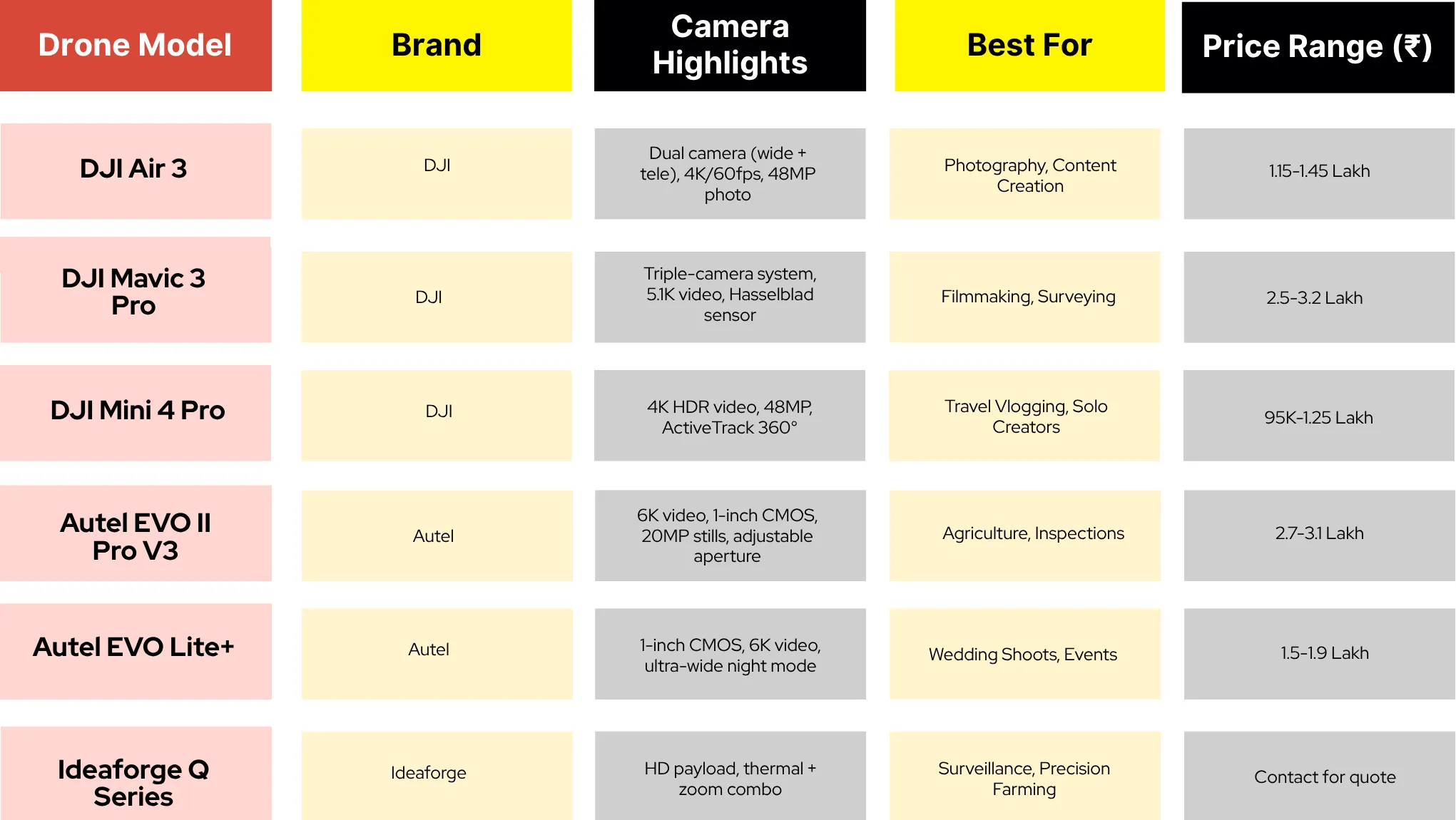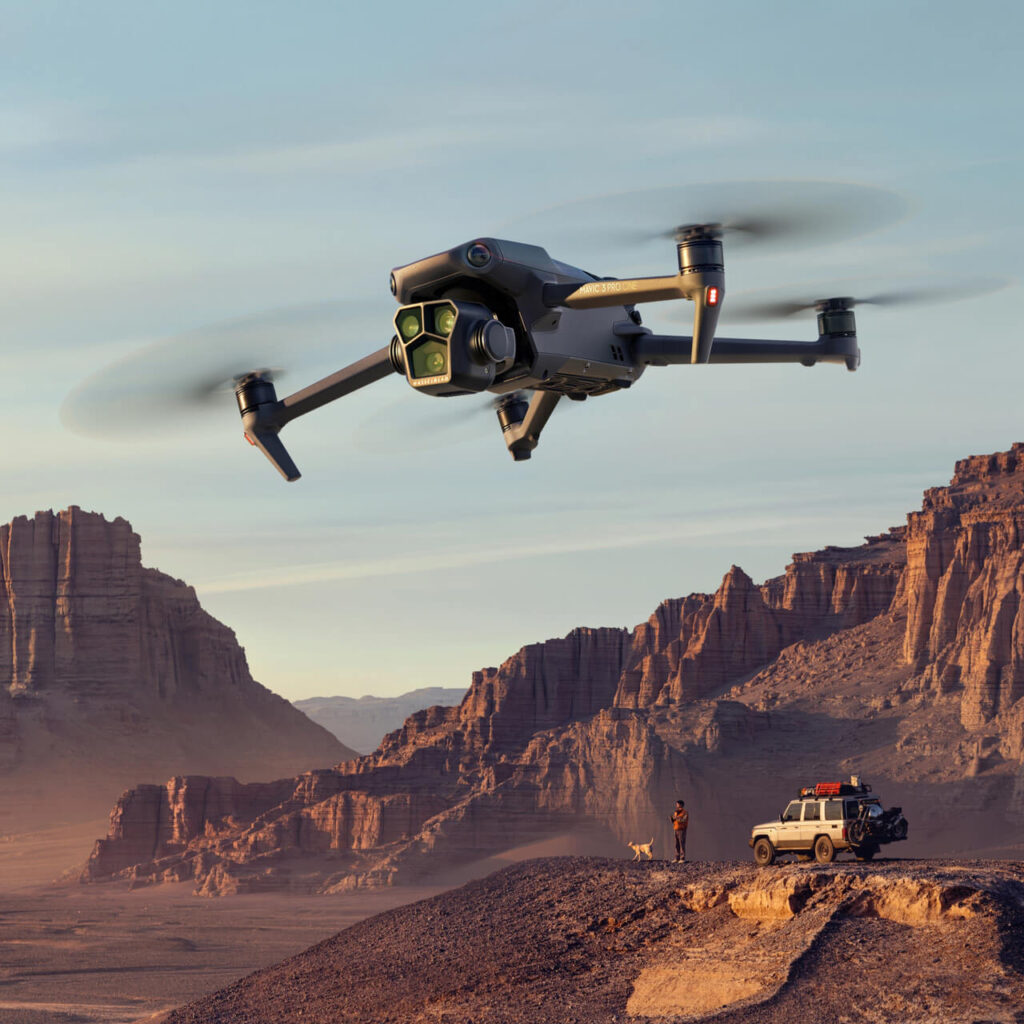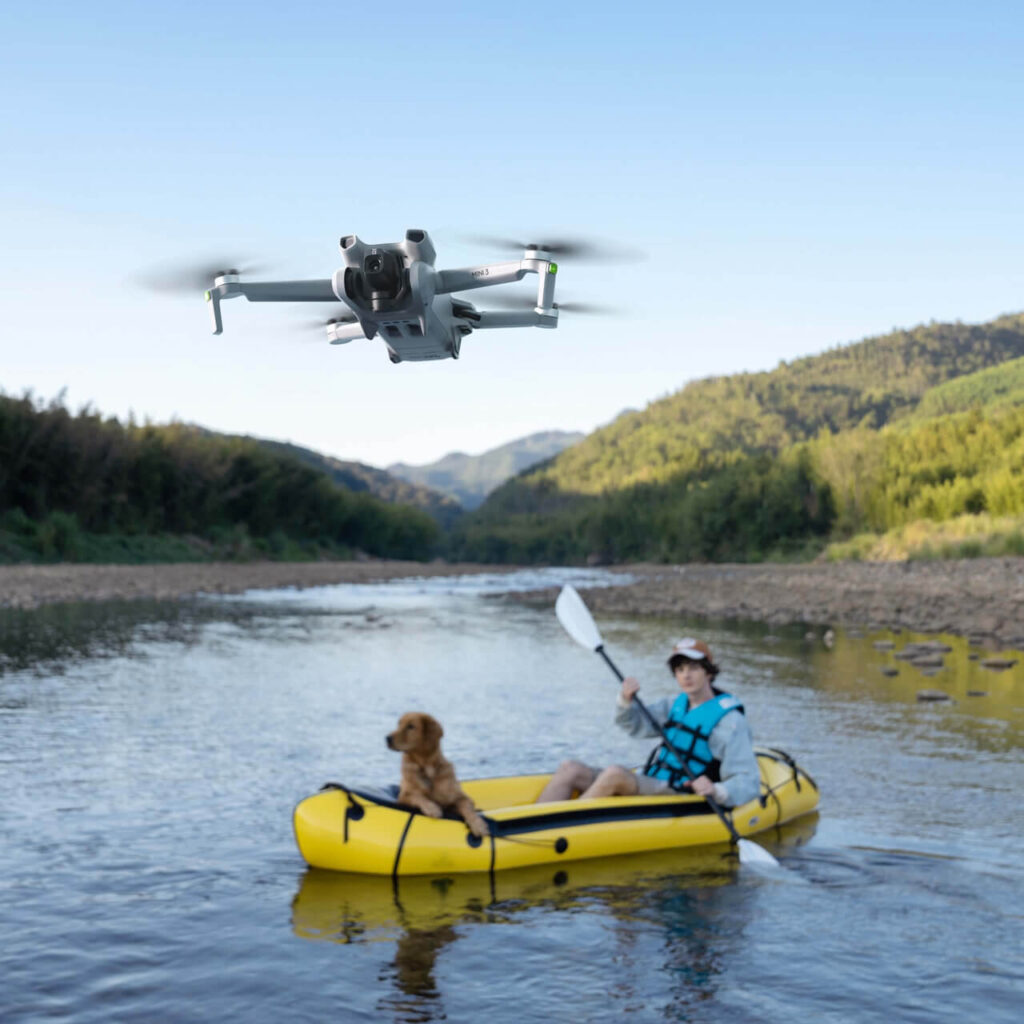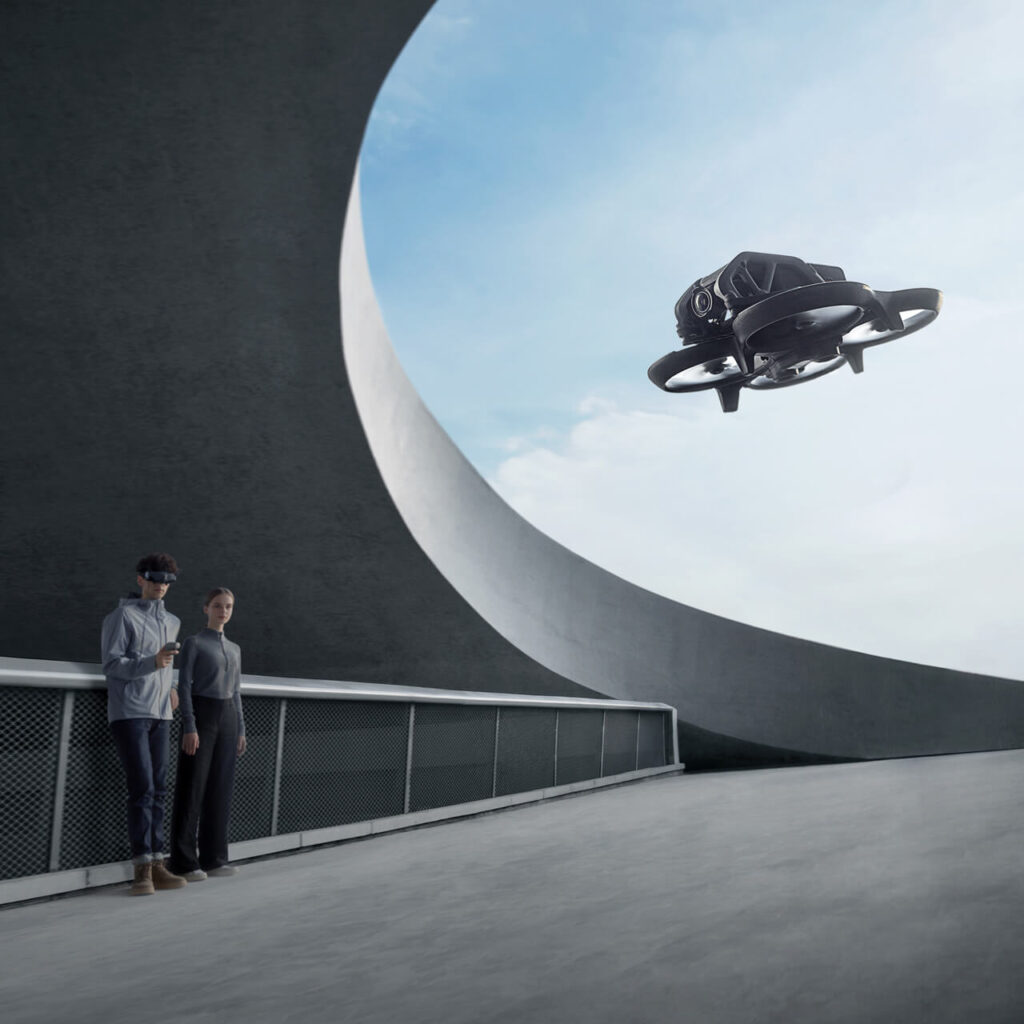In 2025, drone cameras are no longer just a tool for capturing beautiful aerial shots. They’ve evolved into industry game-changers — transforming how professionals work in construction, agriculture, and film production. From monitoring crop health with thermal imagery to inspecting hard-to-reach construction sites and creating cinematic footage for global audiences, the camera is now the beating heart of the drone.
Thanks to innovations from brands like DJI, Autel, and Ideaforge, drone cameras today offer high-resolution imaging, AI-based tracking, zoom capabilities, and even multispectral data — all packed into compact flying machines.
Whether you’re a contractor looking to improve site mapping, a farmer seeking precision insights, or a content creator chasing that perfect aerial shot, understanding what drone cameras can do (and which one is right for you) is more important than ever.
In this blog, we’ll break down:
- How drone cameras are used across different industries
- Key features that make a drone camera “great”
- Top camera drones from DJI, Autel, and Ideaforge in 2025
- What to consider before buying
- Answers to common FAQs
Let’s dive in.
Why Drone Cameras Matter in 2025 (And What’s Changed)
Drone cameras have come a long way from simply capturing pretty landscapes. In 2025, they’re smarter, sharper, and more specialized than ever and that shift is fueling real-world impact across industries.
Here’s what’s changed:
1. Ultra-High Resolution Imaging
- Most professional drones now offer 4K to 8K video and 20–48 MP photos.
- Higher resolution means more detailed inspections, better documentation, and cinema-grade footage.
2. Advanced Sensors
- Beyond standard RGB, drones now feature thermal, LiDAR, and multispectral sensors.
- These help in detecting crop health, measuring distances accurately, and even spotting structural flaws in buildings.
3. Smart Tracking and AI Integration
- With AI-powered object tracking, drones can lock onto moving subjects perfect for capturing machinery in action or following a subject through tough terrain.
- Features like obstacle avoidance and auto framing are now standard in premium models.
4. Zoom & Stabilization
- Many drones now offer lossless zoom, letting you inspect or film from a distance.
- 3-axis and even 4-axis gimbals ensure buttery smooth footage even in windy or unstable environments.
5. Real-Time Data & Streaming
- Livestream capabilities with low latency are being used for remote inspections, live event coverage, and real-time decision-making on farms and construction sites.
Quick Comparison: 2020 vs 2025 Drone Cameras
| Feature | Then (2020) | Now (2025) |
|---|---|---|
| Max Video Quality | 4K | 8K + HDR support |
| Sensor Options | RGB only | RGB, Thermal, LiDAR, Multispectral |
| AI Features | Basic object tracking | Advanced subject recognition + AI |
| Flight Stability | Basic GPS + gyro | Advanced stabilization + obstacle sensing |
| Use in Industries | Mainly photography | Agriculture, Construction, Film, Surveillance |
In short, drone cameras in 2025 aren’t just better they’re industry-specific tools designed for efficiency, accuracy, and creativity.
How Different Industries Use Drone Cameras (Construction, Farming & Filmmaking)
Drone cameras are no longer luxury tools they’re practical, professional equipment now used across multiple industries. Here’s how they’re making a real difference in construction, agriculture, and creative media in 2025.
1. Construction: Eyes in the Sky for Site Monitoring
In construction, drone cameras are now part of the standard toolkit. From high-rise buildings to large infrastructure projects, drones capture real-time visuals that help managers make faster, safer decisions.
What they help with:
- Site mapping & surveying
- Progress monitoring with time-lapse footage
- Inspection of hard-to-reach areas like rooftops or steel frames
- Security surveillance during off-hours
High-end drones from DJI and Autel offer 4K HDR video, zoom capabilities, and thermal cameras ideal for detecting heat leaks or wiring issues.
Related Read: Who’s Really Watching Your Construction Site? In 2025, It Might Be a Drone
This article explores how drones are replacing static CCTV setups with smarter, more mobile surveillance options.
2. Agriculture: Precision Farming with Camera Drones
Farmers today use drone cameras not just to survey fields, but to gather data-driven insights.
How drone cameras are used:
- Multispectral cameras detect plant health and soil moisture
- Thermal imaging helps identify irrigation issues
- RGB cameras create 3D crop maps for better yield planning
Indian agri-tech is quickly adapting to drones from Ideaforge and DJI Enterprise lines, which offer real-time NDVI analysis and geo-tagged visuals for accurate field monitoring.
Explore More: Can Drones Solve India’s Labour Crisis in Agriculture?
This deep dive explains how drones reduce manual labor while increasing productivity across large farms.
3. Photography & Videography: A Creative Revolution
For filmmakers, travel vloggers, and photographers, drone cameras are a creative goldmine. They offer angles no tripod or gimbal can match.
What creators love:
- Cinematic tracking modes like DJI’s ActiveTrack
- 8K footage with log profiles for color grading
- 360° panoramic shots and hyperlapse features
- Compact drones like the DJI Mini 4 Pro that don’t compromise on quality
Whether you’re vlogging in Ladakh or filming a wedding in Kerala, drones like the Autel EVO II Pro deliver stunning visuals with minimal setup.
Top Drone Camera Models in 2025 from DJI, Autel & Ideaforge (With Features & Use Case Fit)
Whether you’re capturing cinematic landscapes, inspecting a construction site, or scanning crops, the right camera-equipped drone makes all the difference. Let’s look at the best models in 2025 from the leading brands DJI, Autel, and Ideaforge and how each fits different industry needs.
Quick Comparison Table: Drone Cameras by Brand

1. DJI Air 3 & DJI Mavic 3 Pro: Versatile Powerhouses
These two models cover a wide range of use cases:
- Air 3 is great for dual-angle storytelling with dual lenses wide and telephoto.
- Mavic 3 Pro features a triple-lens setup, including a Hasselblad wide-angle and medium telephoto lens perfect for commercial shoots and inspections.
Related Post: DJI Mini 3 vs. Mini 4 Pro—Which Combo Is Right for You?
If you’re torn between DJI’s popular Minis, this guide helps you choose based on camera needs and portability.
2. Autel EVO Series: For Night Shoots & Advanced Control
Autel drones are known for offering manual exposure control, low-light enhancements, and longer flight times all critical for videographers and survey teams.
- EVO II Pro V3 is a top choice for precision mapping and thermal inspection.
- EVO Lite+ shines in low-light weddings, travel shoots, and cinematic scenes.
3. Ideaforge Q Series: Built for India’s Harsh Environments
Unlike consumer drones, Ideaforge designs its UAVs for industrial-grade missions in India.
- Dual payload options (camera + thermal) make it perfect for farms, military, and disaster zones.
- Known for reliability, GPS accuracy, and flight stability even in harsh winds or dust-prone areas.
Also Check Out: What Is the DJI Fly More Combo? Is It Worth It in 2025?
For many users, accessories like extra batteries and camera filters make a huge difference in field performance.
What to Look for in a Drone Camera (A Buyer’s Checklist for 2025)
Buying a drone in 2025 isn’t just about the flight it’s about the camera. Whether you’re flying over farmlands, construction sites, or filming a cinematic short, your drone’s camera features will make or break the results.
Here’s a clear checklist to guide your buying decision.
1. Resolution & Sensor Size
- For sharp images and detailed video, go for at least 4K resolution and a 1-inch CMOS sensor.
- Higher megapixels (like 20–48 MP) help when cropping or zooming in post-production.
- If you’re into pro-level videography, consider 5.1K or even 6K capabilities.
2. Stabilization System
- A 3-axis gimbal is the minimum; it smooths footage during sharp turns or in windy conditions.
- 4-axis or hybrid gimbals offer even better stability for vertical shots and advanced maneuvers.
3. Intelligent Shooting Modes
- Features like ActiveTrack, MasterShots, and Hyperlapse allow you to focus on storytelling, not just piloting.
- DJI’s Mini 4 Pro and Air 3 have pre-set cinematic flight paths that are ideal for solo creators.
4. Zoom & Low-Light Performance
- Optical or hybrid zoom is useful for inspections and dynamic filming.
- Drones like the Autel EVO II Pro offer adjustable aperture and night mode, which help in low-light or dusk shoots.
5. Camera Payload Flexibility
- In agriculture or industrial settings, choose drones that support modular payloads like thermal, multispectral, or LiDAR cameras.
- Ideaforge drones excel in this area for precision farming and surveillance.
6. Battery Life + Flight Time
- A longer flight time (at least 30 minutes) ensures more shooting with less downtime.
- DJI’s Fly More Combo often includes extra batteries — worth it if you’re filming in remote areas.
Want to know more? What Is the DJI Fly More Combo? Is It Worth It in 2025?
We break down what’s included, who needs it, and whether it adds real value for your shoot days.
7. Data Output & App Ecosystem
- Look for compatibility with editing tools, mapping software, or agriculture platforms.
- DJI Fly and Autel Sky apps now include cloud syncing, editing, and real-time streaming options.
Summary: Prioritize Based on Your Use

FAQs About Drone Cameras in 2025
1. Do I need a license to use a drone with a camera in India?
Yes, if your drone weighs more than 250 grams or is used for commercial purposes, you’ll need:
- Drone registration (UA Number) through DigiSky
- Pilot training + Remote Pilot Certificate (RPC) for medium-to-large drones
- Compliance with NPNT (No Permission No Takeoff) protocols
Need help navigating the rules?
Can I Fly My Drone Freely or Do I Need a License? Understand the Rules breaks it all down for you.
2. Can I use a drone camera at night or in low-light conditions?
Yes, if your drone has night shooting features, such as:
- Large sensor size (1 inch or more) for better light capture
- Adjustable aperture (f/2.8 to f/11) like in Autel EVO II Pro
- Night modes or HDR for low-light clarity
3. What’s the difference between a standard and a thermal drone camera?
- A standard camera (RGB) captures images like a regular digital camera.
- A thermal camera detects heat and is used for crop health analysis, construction inspections, or surveillance.
Some drones (like Ideaforge Q Series or DJI Mavic 3T) offer dual payloads with both.
4. How do I avoid buying a refurbished or fake drone?
Only buy from authorized sellers like Jetayu Gadgets, and always:
- Ask for original invoice + serial number
- Verify warranty status on the brand’s official site
- Check the product box for any signs of tampering
More on this here: Bought a Drone Recently? Here’s How to Verify If It’s Not Refurbished
5. Can drone footage be used commercially for real estate or events?
Absolutely. Many creators and agencies now use drone footage for:
- Weddings
- Real estate tours
- Promotional brand content
- Survey documentation
Just ensure you’re licensed and follow local flight regulations.
6. Which drone camera is best for beginners?
For new users, the DJI Mini 4 Pro is highly recommended:
- It’s under 250 grams, so no license needed for personal use
- Comes with ActiveTrack, 4K HDR, and built-in safety features
- Portable, affordable, and beginner-friendly
Related Guide: Buying a Drone for the First Time? The DJI Mini 4 Pro Makes It Easy to Fall in Love with Flying
Final Thoughts
Drone cameras have become mission-critical in 2025 from growing food and building cities to telling unforgettable stories. Whether you’re a farmer, contractor, filmmaker, or hobbyist, there’s a powerful flying camera that fits your needs.
As a trusted multi-brand seller, Jetayu Gadgets offers original drones from DJI, Autel, and Ideaforge, backed with expert support, after-sales help, and upgrade options. If you’re looking to invest in the right camera drone, Jetayu can help you take off with confidence.



